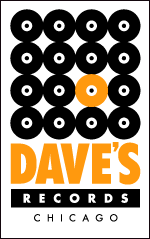
Adam Rudolph and 2024 Pulitzer Prize winner Tyshawn Sorey are two of the very finest composer-percussionist-drummers on the current scene. With Archaisms I and Archaisms II, they’ve combined forces for two of the year’s best releases. The first is a duet recorded on December 16, 2021, the second a percussion quintet captured on February 9, 2023; both are live performances that thrive on inspired, intense interaction and robust compositional strategies. The sets are out now through Yeros7, with Meta Records handling the 180 gram vinyl in North America and Defkaz Records shipping everywhere else.
On record, Adam Rudloph’s creativity spans back to the 1970s where he was co-founder of the Mandingo Griot Society with Gambian kora player Foday Musa Suso; released by the Flying Fish label in 1978, their debut album featured Don Cherry as a guest. Versatility, a common trait in drummer-percussionists, is reinforced by Rudolph’s playing partners. Amongst them are Sam Rivers, Pharaoh Sanders, Jon Hassell, Philip Glass, Wadada Leo Smith, Muhal Richard Abrams, and Andre 3000. In 1988, he began a lengthy and fruitful association (15 releases) with multi-instrumentalist Yusef Lateef.
Tyshawn Sorey’s recording debut came on Vijay Iyer’s 2002 disc Blood Sutra. From there, the collaborations flowed as he continued conservatory study; he’s currently a professor at the University of Pennsylvania. Sorey’s on record with Anthony Braxton, Sirone, Billy Bang, John Zorn, Roscoe Mitchell, Steve Lehman, Myra Melford, Kris Davis, Ingrid Laubrock, Marilyn Crispell, Craig Taborn and many more. Sorey’s also the leader or co-leader on over 20 releases; Uneasy, issued by ECM in 2023 with Iyer and Linda May Han Oh, is a gem.
Sorey’s Pulitzer Prize for Music was awarded for his composition Adagio (for Wadada Leo Smith). Like Rudolph, Sorey has played with Smith, Roscoe Mitchell, Dave Leibman and Bill Laswell. Rudolph is also the leader of numerous projects including Adam Rudolph’s Moving Pictures and Go: Organic Orchestra; 2019’s Ragmala: A Garland of Ragas, featuring Go: Organic Orchestra with Brooklyn Raga Massive, is a magnificent joining of forces.
It’s important to add that Rudolph, like Sorey, is a prolific composer. For Archaisms I, the pair are exemplars of spontaneous composition, having built their shared vision on the bedrock of constant practice and creative focus while sharpening the interaction through the familiarity of prior collaborations that span back to 2018. It all flows as one piece (with an obvious break for the flipping of vinyl), extended but not overinflated.
Sorey is on drum set and percussion while Rudolph plays hand drums (kongos, djembe, and tarija) plus thumb piano, slit drum, temple blocks, overtone flute, shakers, and additional percussion. Reading of this combined arsenal can suggest a stream of unrelenting rhythmic explosiveness, but the progression ranges from spacious calm to thunderous yet controlled crescendos intended to function compositionally within the piece rather than serving as flights of improvisation (either solo or mingled).
Duo exchange is one of the great joys in the post-Coltrane jazz era (Interstellar Space being the launching pad), but there’s something especially gripping about a dialogue of the drums. What Sorey and Rudolph have achieved with Archaisms I gathers root energy from spontaneity and intensifies it through artistic visions that cohere but never clash or even meander in hopes of reigniting the spark. It’s a miraculous, life-affirming journey, and a trim ride at 45 minutes.

African, African-American, and European musical traditions are integral to both sets, but the roots of the Continent are quickly discernible in Archaisms II, the size of the group expanding as piano is added to the instrumental scheme, played first by Sorey and later by Rudolph, both of whom also conduct the quintet (Rudolph first, then Sorey) across the set’s 47 minutes.
The additional players are Sae Hashimoto and Russell Greenberg, both of the new music ensemble Yarn/Wire, and Levy Lorenzo, a member of the International Contemporary Ensemble (ICE), all percussionists on multiple instruments, with Lorenzo adding electronic percussion to the palette. Along with Sorey’s drums, there is Rudolph with the hand drums, more percussion, electronic processing, and even a little singing.
The European roots radiate an atmosphere that is decidedly Modernist classical and 20th century avant-gardist in nature, adorned with moments that recall the early electronic groundbreakers (think of the edgier material released by the Deutsche Grammophon, Wergo, Vox Turnabout, and Nonesuch labels in the 1960s-’70s).
What makes Archaisms II stand out and take its place amongst the cream of the 2024 crop is the emphasis on rhythm (as opposed to strings, say), which elevates the African and African-American traditions in the piece, so that the World-Fusion trailblazers are brought to mind (harkening back to Rudolph’s early days) but without rehashing variations on long established form moves. Archaisms I and Archaisms II engage with the past in ways that are solidly and often grippingly of the moment.
GRADED ON A CURVE:
Archaisms I & Archaisms II
A












































